Disclosure: Please note that some links are affiliate links, and at no additional cost to you, we earn a commission if you make a purchase.
If you would like to support this website in some way, using these links will help do exactly that.
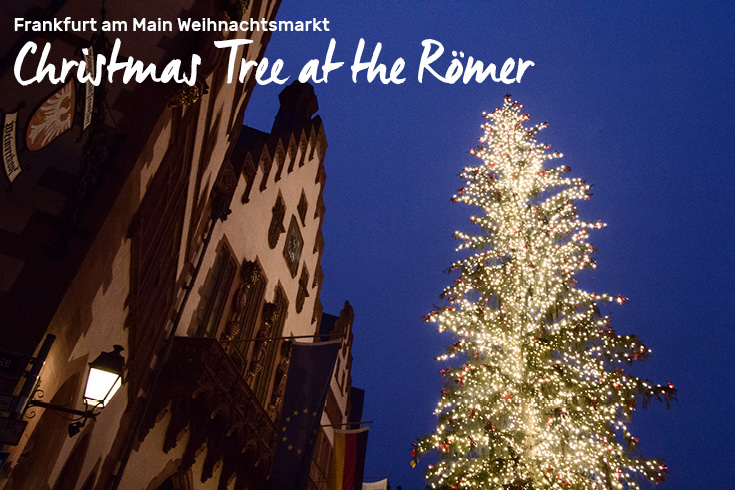
Last year was my first Christmas in Germany, and my first time visiting Christmas markets. I was emotionally surfing between being terrified of the crowds and anxious worrying whether I’d be warm enough to have a good time to bubbling to delirium level of excitement to drink authentic Glühwein and see a new facet of German culture I’d heard so much about. All of our friends and family wanted to take us to a Christmas market, so we ended up seeing four in 2017: Frankfurt am Main, Michelstadt, Nuremberg, and Hanau. I’ll share my favorite photos from each throughout this post.
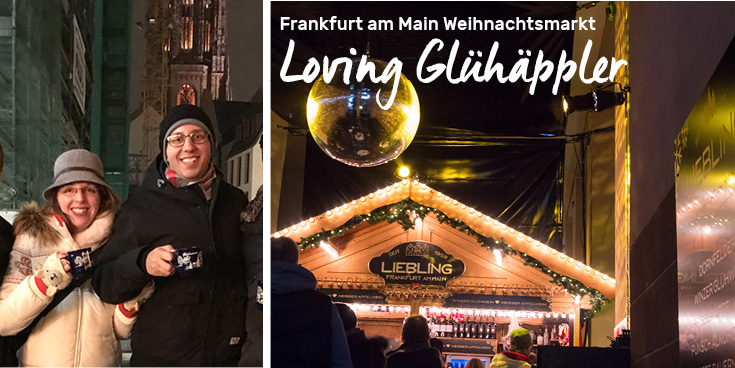
What to Wear to German Christmas Markets
As a Florida girl, I have thin blood to begin with. Anything 60 degrees Fahrenheit and below and I start layering. This is exactly what I ended up doing for the Christmas markets. I tried fleece lining leggings from Modcloth, and I could wear those under my straight legs jeans without anyone being the wiser. I really think they were a huge help to keeping me warm. When I put my thick boot socks on, I’d use the elastic from the sock to go over top the bottom of the leggings layer so no skin around my ankles were exposed. I always wore leather boots with two pairs of socks, a thin pair with the boot socks over those. Sebastian brought over air-activated heated insoles for his shoes. I tried them once, and I felt like they got too hot for my preference, but he loved them and used them throughout the whole Christmas vacation.
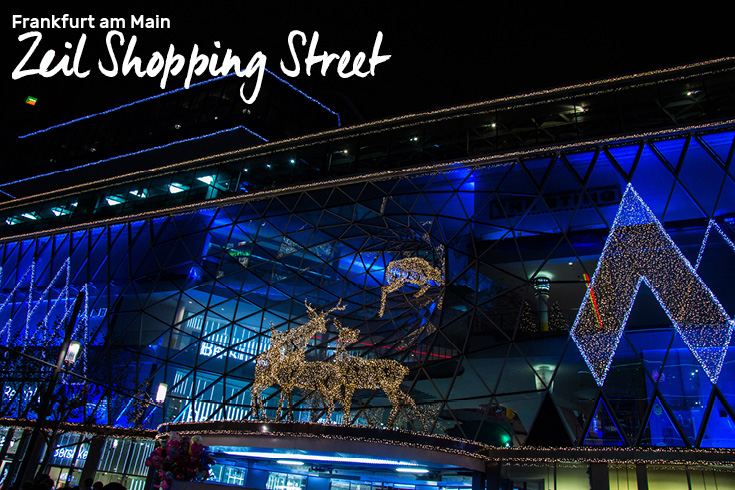
When picking out tops, remember it's unlikely anyone is going to see them! Layer up, and grab anything you have that is thermal. Even though your coat may have a hood on it, look for a winter hat that fits securely on your head. Hoods limit your peripheral vision too much to be practical. Plan on wearing gloves as well, and if you’re planning on taking pictures look for the gloves that are convertible between being fingerless and mittens. All this being said, I was NOT miserably cold. I was able to enjoy myself, and of course the hot Glühwein (pronounced glue-vine) helped!
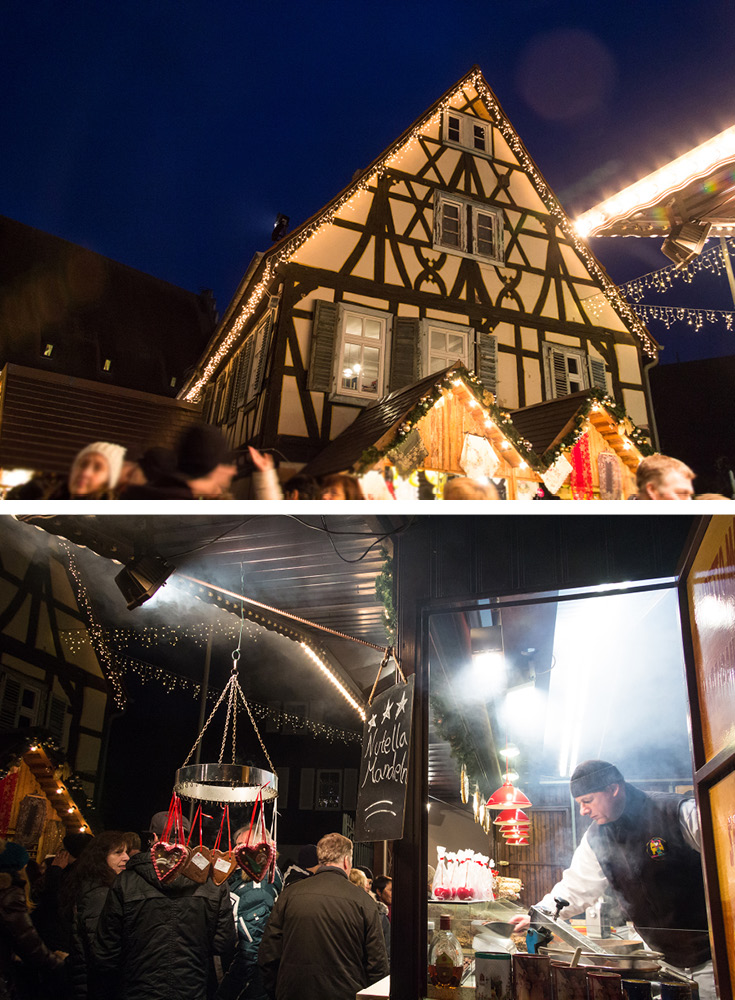
What to Drink at German Christmas Markets
Speaking of Glühwein...this hearty hot, spiced, mulled wine is the starlet beverage of the holiday season. Some Christmas markets, like Nuremberg's, the Glühwein is regulated, and all of the booths offer the same make. If you see a particular stall that has a longer line, don’t be fooled into thinking their Glühwein is better. In Nuremberg they’re all from the same manufacturer. But, other markets like Michelstadt you see the Glühwein is being freshly made in the background out of a slow cooker labeled Glühwein! It depends on the market you’re visiting. In Frankfurt am Main, they offer a hot, holiday version of their Frankfurt Äppler, called Glühäppler. Basically hot cider, which sounds odd at first, but tasted amazing.
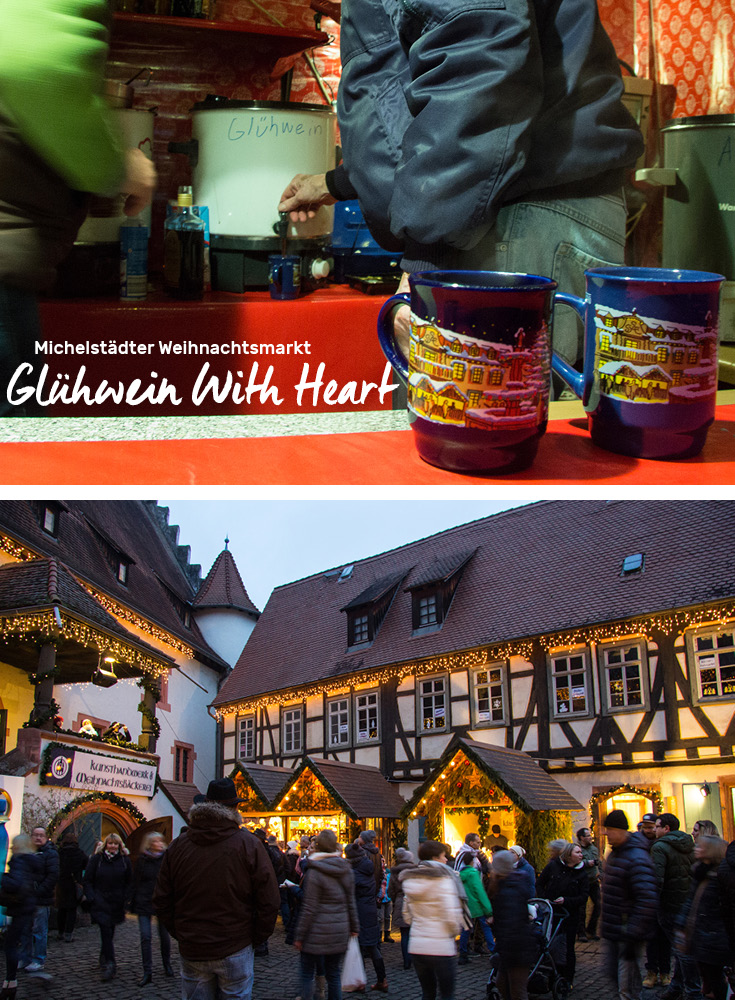
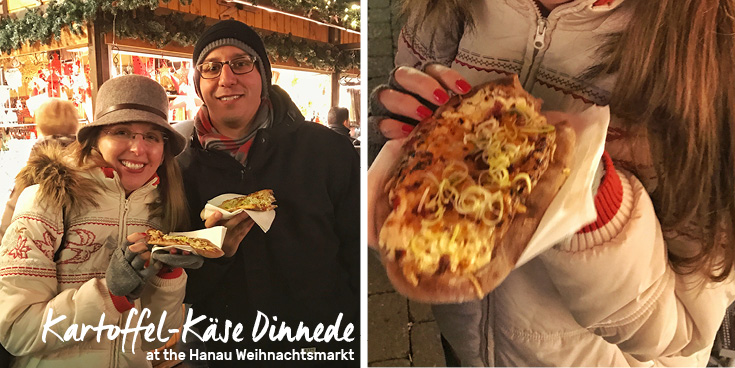
What to Eat at German Christmas Markets
Definitely go to the Christmas Markets hungry! There’s a breadth of choices. Michelstadt really pushes their boar specialities, Hanau we were encouraged to try (and we loved) the Kartoffel-Käse Dinnede. It's a type of flatbread pizza with sour cream, potatoes, and onions grilled. A safe bet is a Frikadellenbrötchen, a German meatball nestled into a sourdough bread roll. It's not messy to eat, and easy on the stomach for a night of drinking Glühwein.
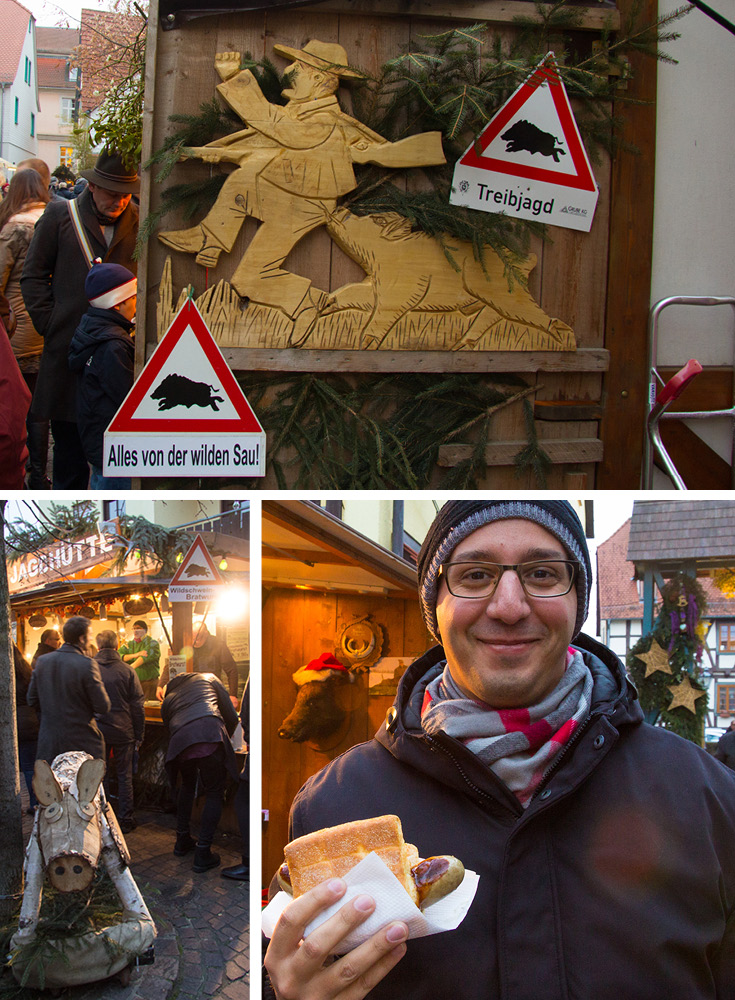
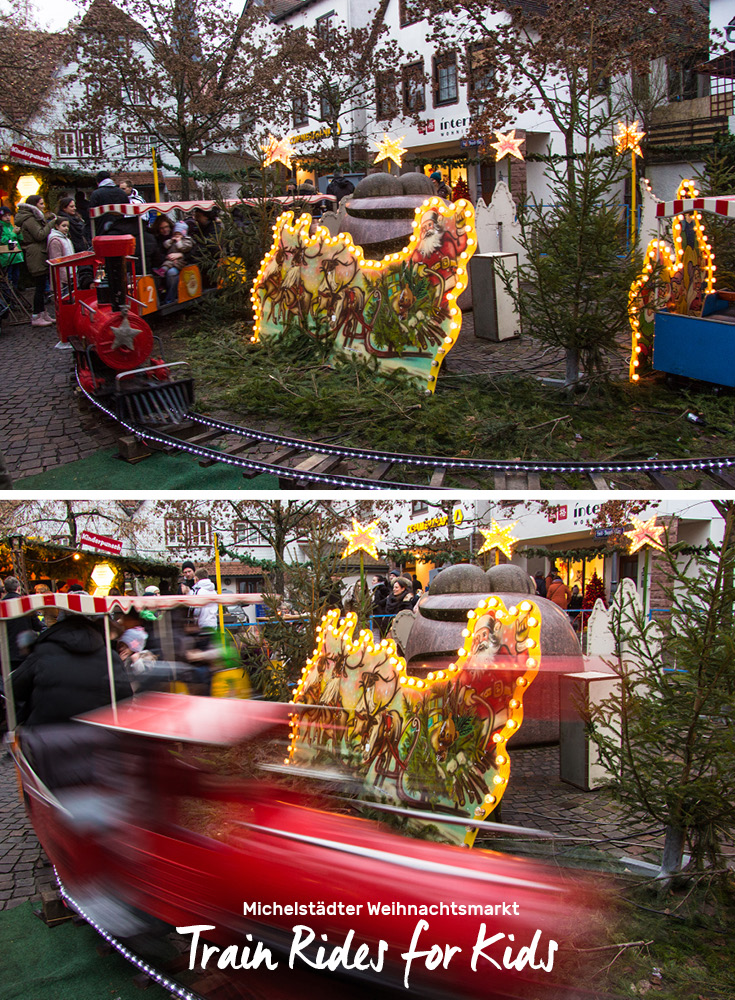
Personal Safety at Christmas Markets
When planning a fun, festive night out at the markets pick a meeting spot within the market in case someone gets separated in the waves of crowds, and pick a meeting spot outside the market in case of an emergency. Sebastian and I were at the Nuremberg Christkindlesmarkt the same night there was an attack at the Berlin Christmas Market. Overnight the security drastically changed in Nuremberg. Where there were open streets the night before, by morning large police vehicles and fire trucks were parked along any open area in order to shield the market area from attackers hoping to use vehicles for mass-harm. Don’t let fear keep you from the markets, but do be safe, smart, and plan ahead!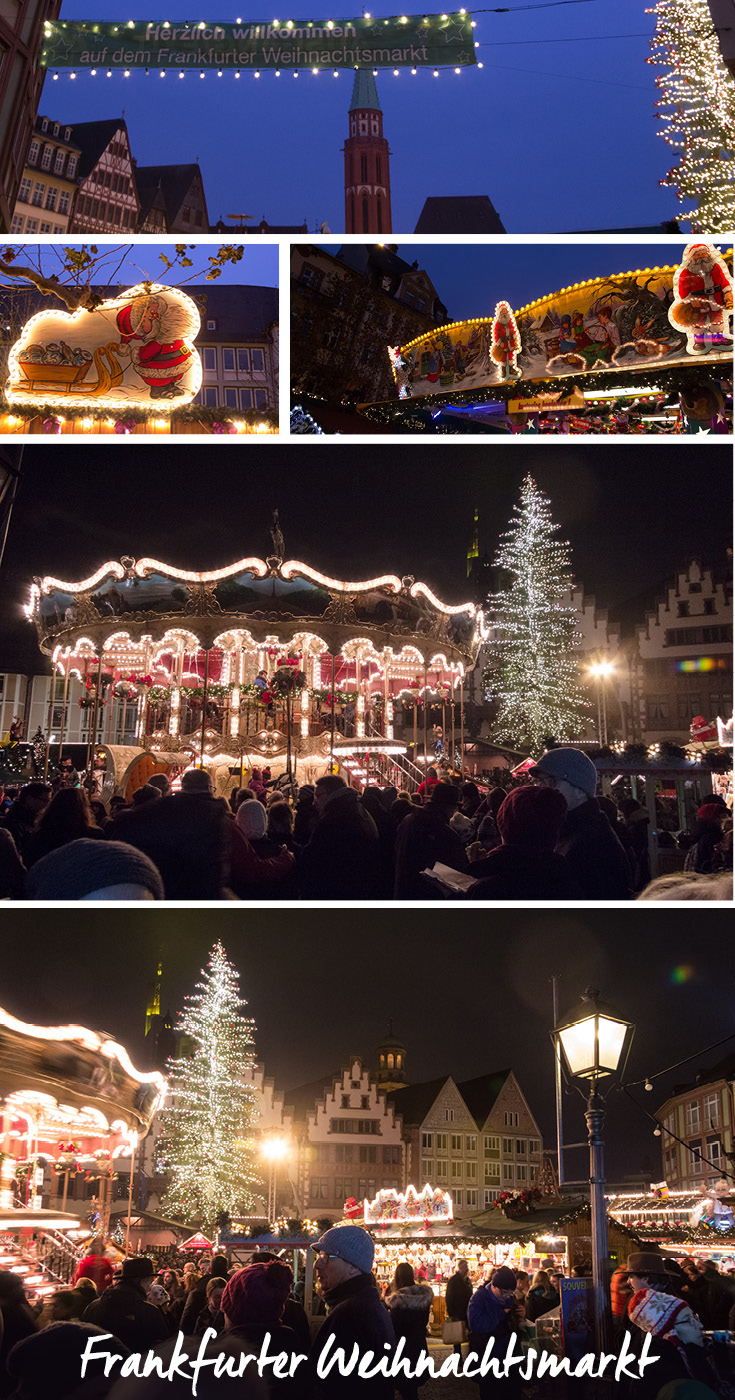
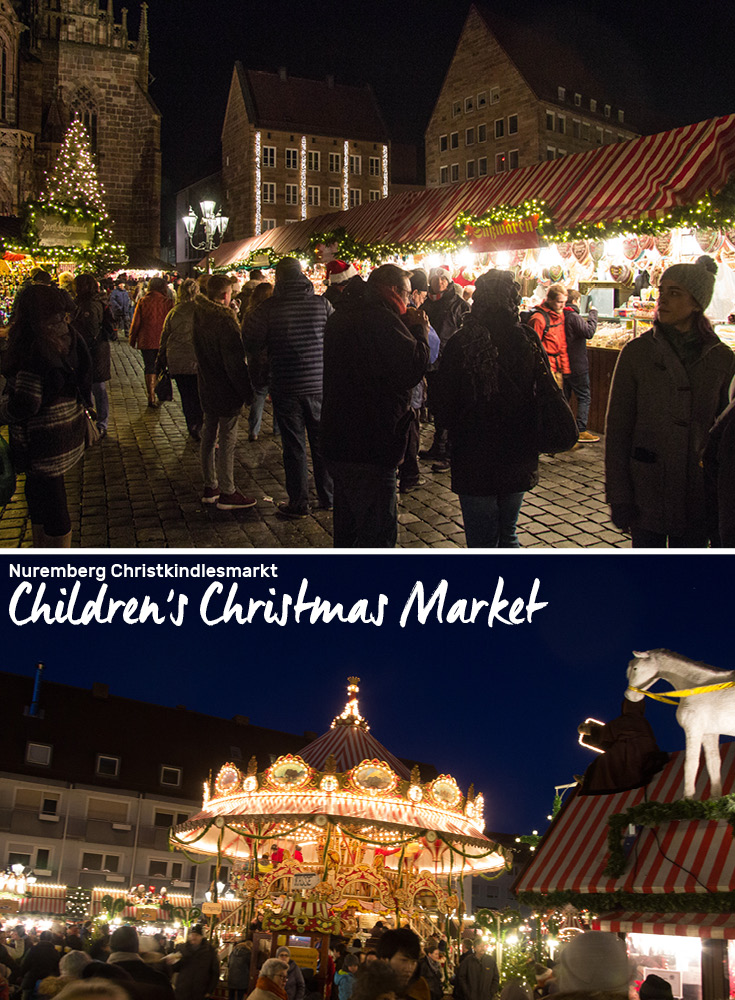
Star Attractions
Each Christmas market we visited offered exclusive events or experiences in order to distinguish themselves from other markets. Nuremberg has the Christkind legacy, a special childrens’ market, a global market, and strict standards on booth decorations in order to keep the market feeling traditional. Frankfurt am Main has coordinated ringing of the Church bells, a stunning decorated tree in front of the Römer, carolers singing from the rooftop of the church, and alternative smaller markets within the city’s market. Michelstädt’s and Hanau's star attraction is a larger than life Christmas pyramid while you stroll through the tiny cobblestone streets.
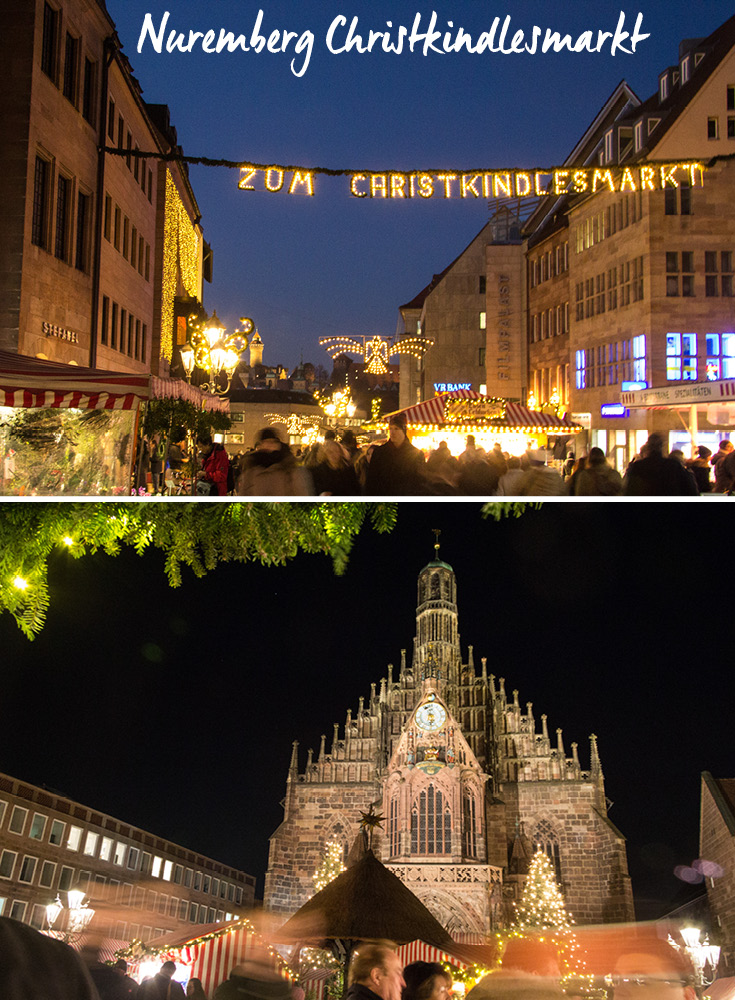
Craving Christmas Markets
I really fell in love with Germany's Christmas markets, and sorely miss them this year. I wonder why they haven't taken off in the United States? If you're looking for ways to bring German Christmas spirit home with you, read our earlier article here. Are you going to visit any German Christmas Markets this year? If you have any questions, we'd love to help! Leave a comment below or send us an email.
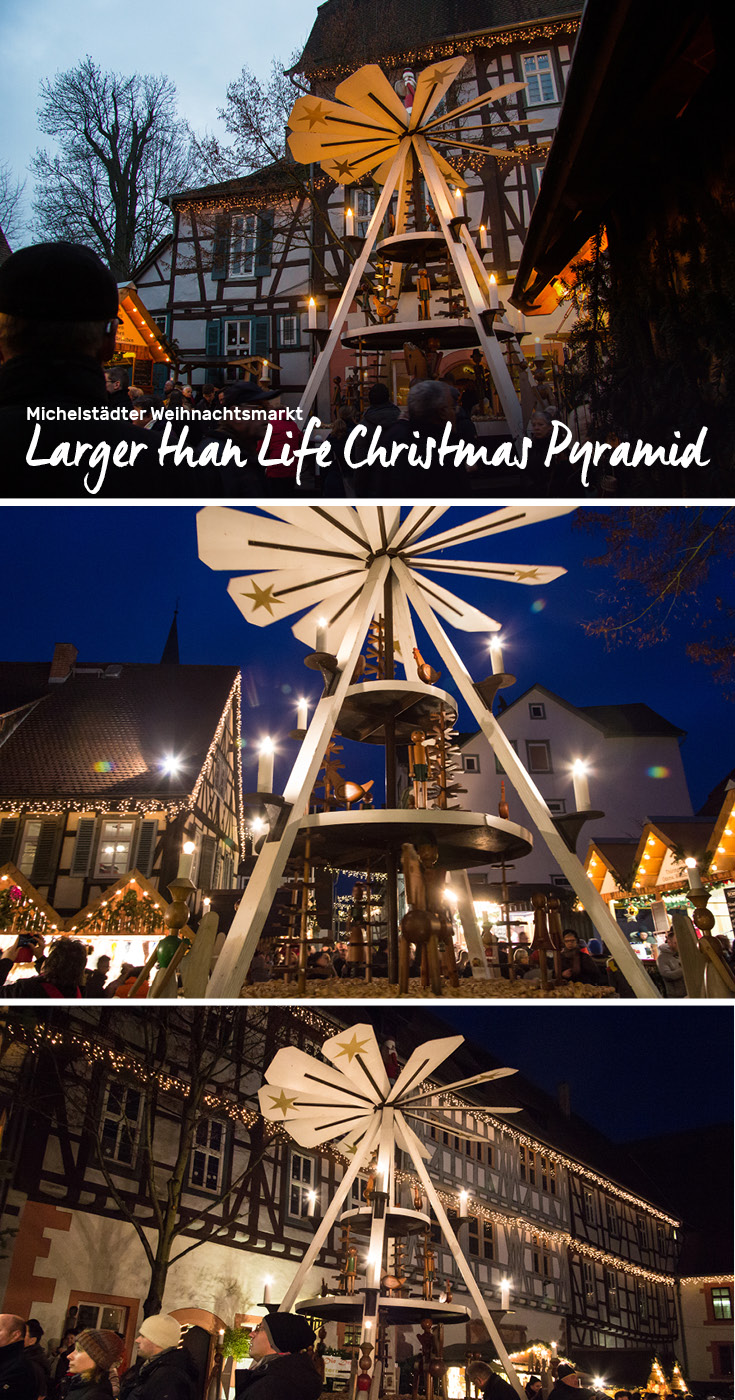
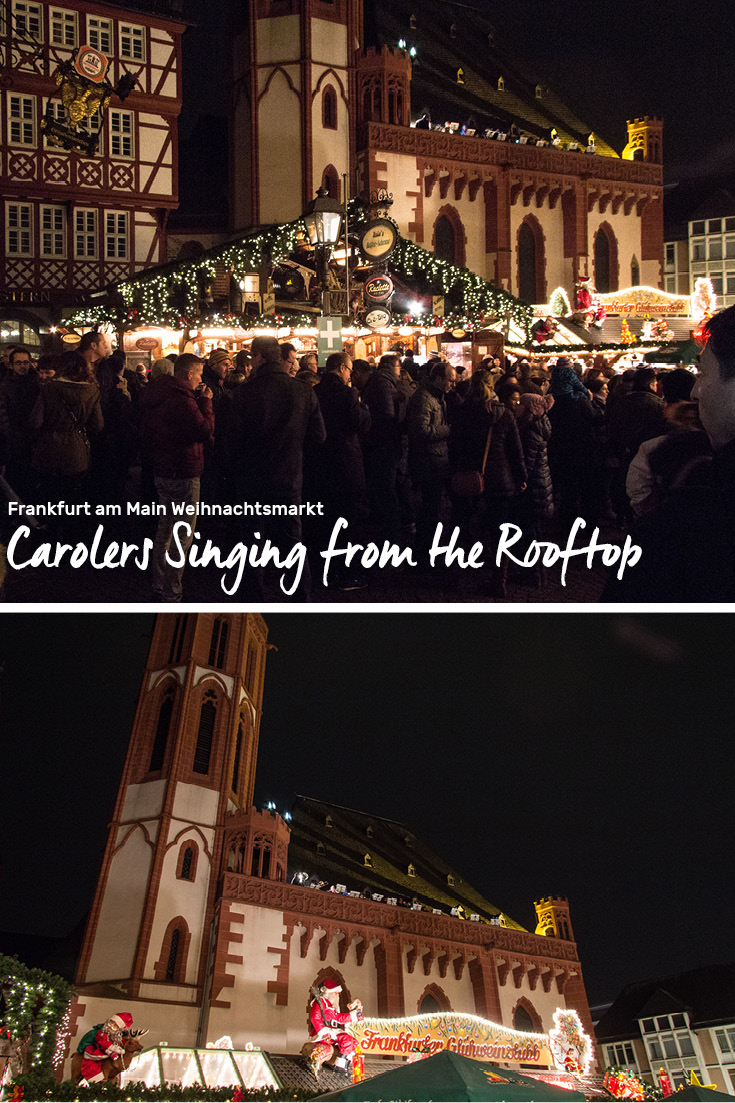
Follow Along
If you enjoyed this article, or these topics sound interesting to you, you'll love our weekly newsletter. You'll receive the newest posts each week and exclusive access to free planning resources like ‘Packing List & Tips for 2 Weeks in Germany’ and ‘Everything You Need to Rent a Car in Germany.
Thank you for reading!

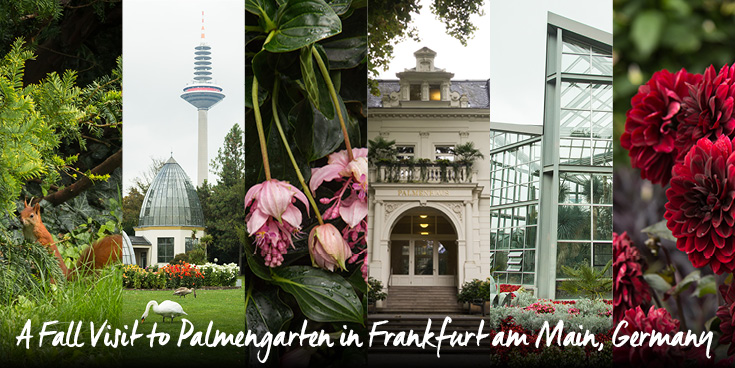
If you’re looking for a tranquil, breath of fresh air while exploring the skyscraper city Frankfurt am Main, I have the place for you. In the middle of the city, is a large, historic, landscaped park showcasing a large greenhouse complex, gardens, playground, lake, and more. Like many of Frankfurt’s attractions, Palmengarten has always been a public park supported by the citizens of Frankfurt. A joint stock company was founded in order to acquire the famous plant collection of the Duke Adolph of Nassau (who found himself on the losing side of a war and needed to sell), and Heinrich Siesmayer, a landscape gardener laid out the initial design for the Palmengarten in 1869 in an English garden style. It's easy to forget that in those times, a majority of the plants on display had never seen before as they were from inaccessible, far away countries. Today, with global travel becoming easier for more people, it's still fascinating to see faraway habits recreated in the middle of Germany. It's possible to visit all of the exhibits in roughly two hours. Check the calendar to see if there are any temporary exhibits being shown in the Palm House.
As a photographer, there was beauty everywhere and I had so much fun shooting plants I’d never seen before in such a calm environment. I’m excited to share my best shots from our visit.
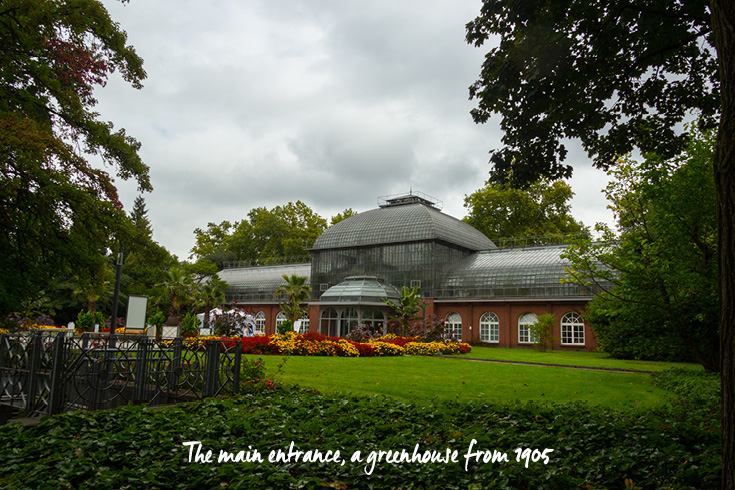
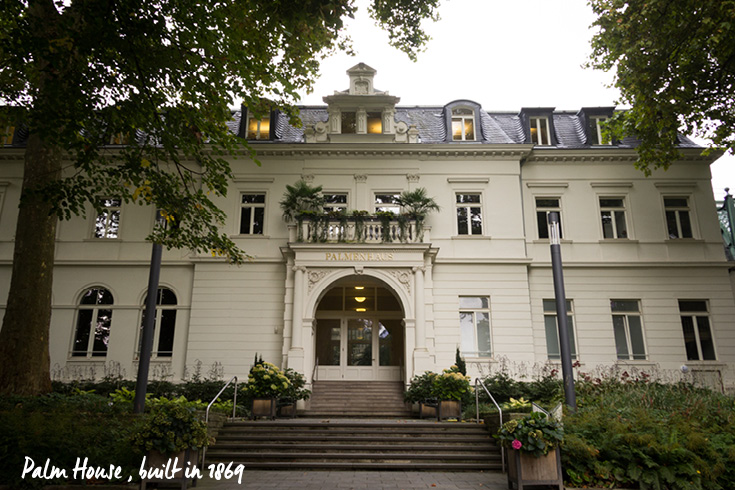
Is There a Rose Garden?
Of course there’s a rose garden. What plant collection would be complete without one? It's peak time is in spring and summer, and a favorite rental space for weddings.
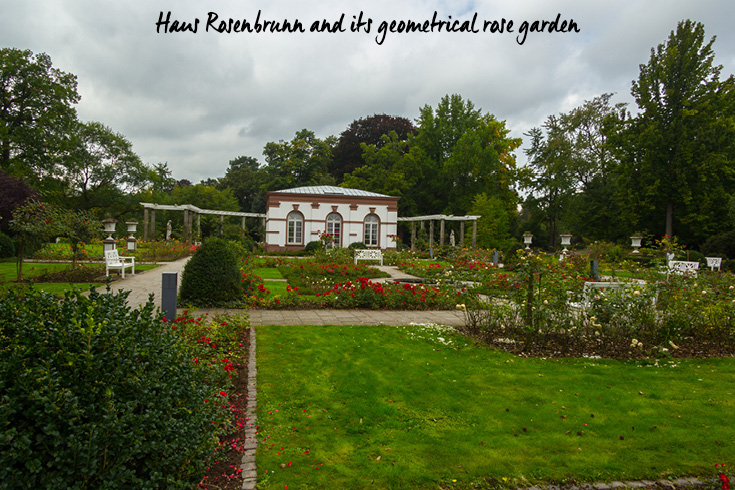
All Year Long
Palmengarten boasts multiple greenhouses, each showcasing habitats from all over the world, even Tazmania and the Arctic! Thanks to the greenhouses, you can enjoy the Palmengarten all year round, no matter the weather. We went in September, and although it was cooler and overcast, the dahlias were in full bloom and we loved visiting the Tropicarium.
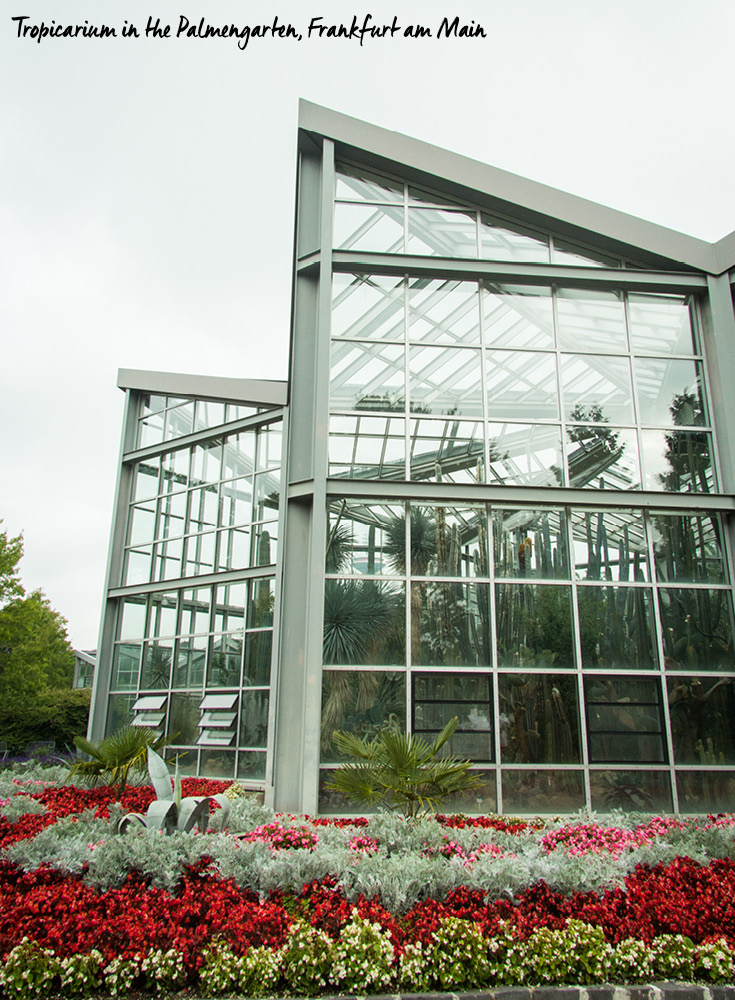
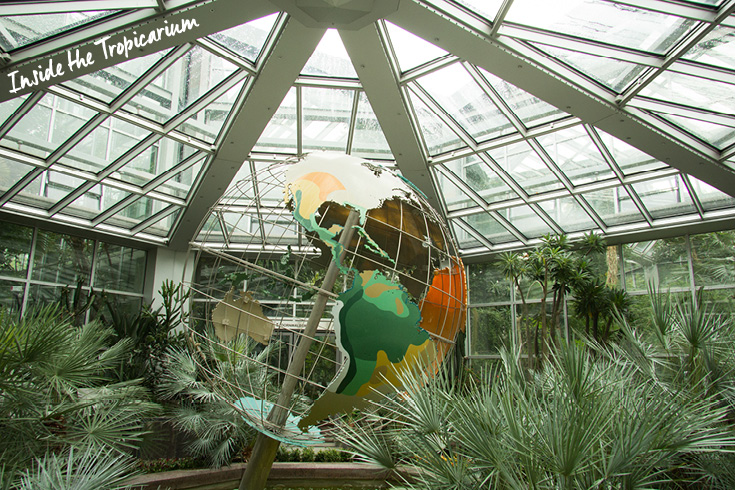
When you enter the Tropicarium, you’re met with an oversized spinning globe, surrounded by plants. From there, you choose which simulated natural habitat you’d like to see, arid or humid. There are semi-desert regions, fog desert, deciduous dry forests and thorn forests in the southern, arid habitats. The monsoon forests, cloud forests, mangrove swamps, and lowland rainforests are in the northern humid habitats. I was delighted to see turtles and birds living inside the greenhouse. The turtles were basking on a log by a fountain.

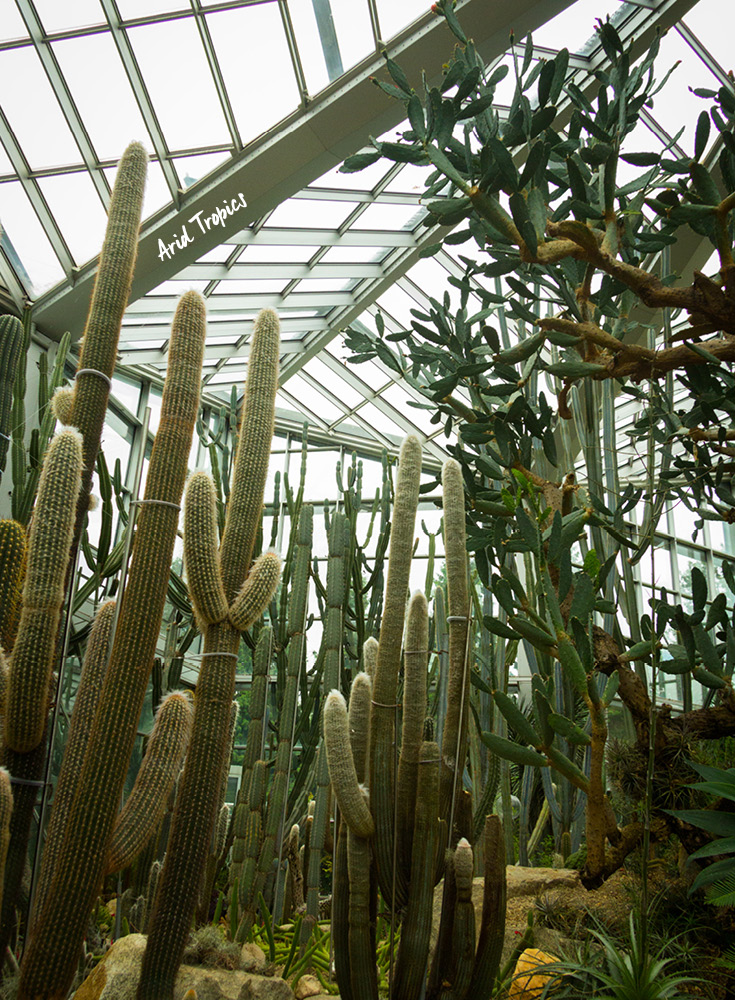
Palmen-Express
I was surprised to see an old fashioned style train. The park is a bit of a walk if you do everything. Palmen-express train connects the northern and southern parts of the park for a small fee. Parents with tired kids will love this, but I was enjoying the long walk personally. It's a cute element to the park.
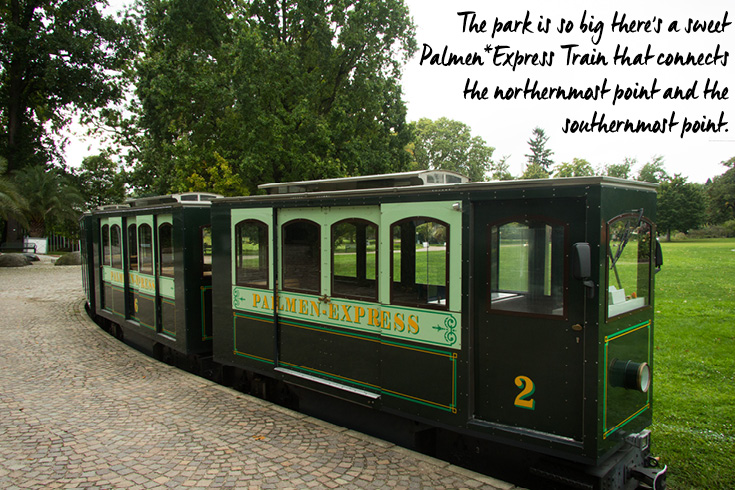
Haus Leonhardsbrunn
One of the best things about visiting Germany in September is that the dahlias are in full bloom. I was in dahlia heaven when we made it to the northernmost part of the park. In front of Haus Leonhardsbrunn was an enormous arched bed of plenty of dahlia varieties. A family of swans were daintily posing on the playing field in front, adding to my photographer’s euphoria.
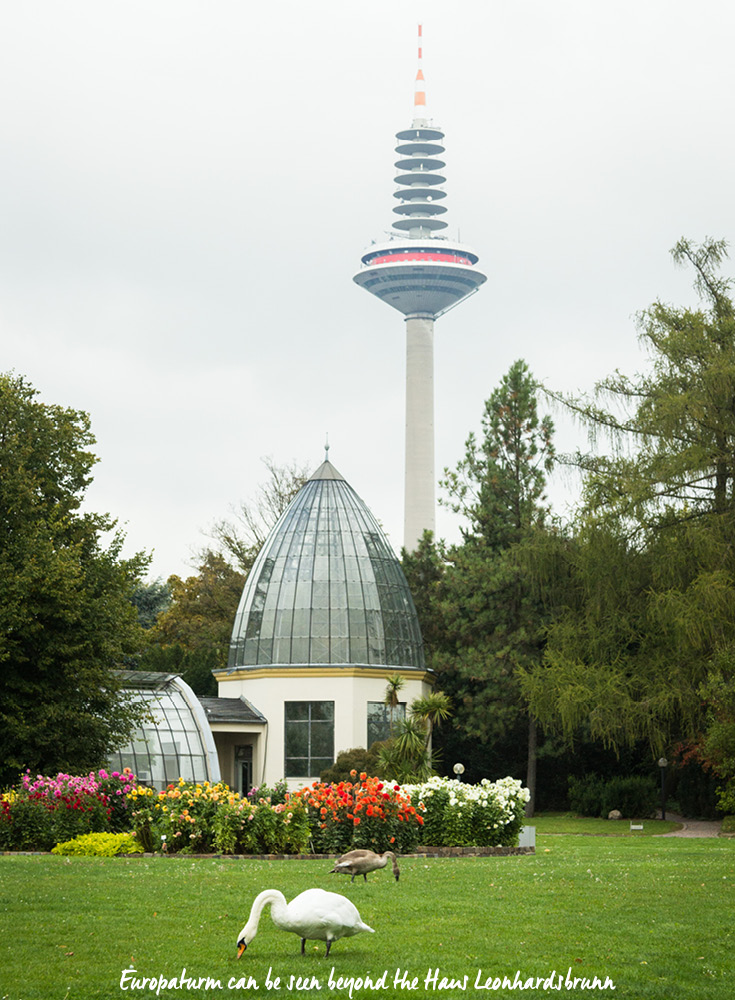

Rock and Heather Garden by the Lake
The Frankfurt Palmengarten could also be a great date destination. In addition to providing a beautiful, calm backdrop, there’s also a large shallow lake which offers paddle boat rentals. Overlooking the lake is the waterfall from the nearby rock and heather garden.
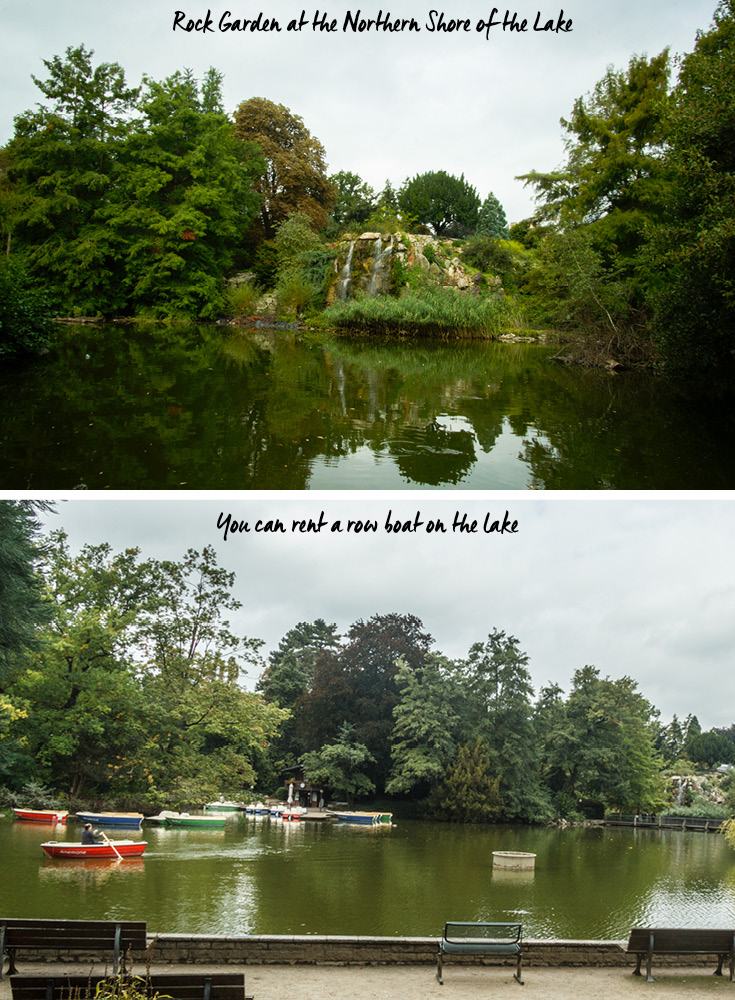
Squirrel Haven
If you want to see red German squirrels, Palmengarten is a great place to spot them. I saw four. Normally I count myself lucky if I spy ONE squirrel in two weeks in Germany.
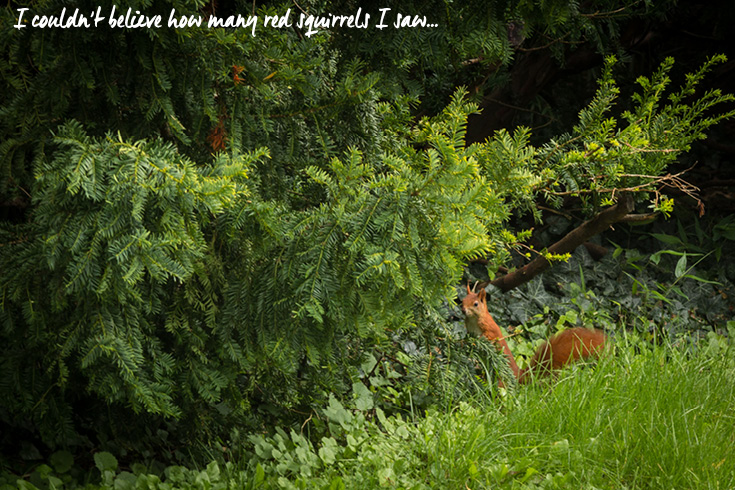
Follow Along
If you enjoyed this article, or these topics sound interesting to you, you'll love our weekly newsletter. You'll receive the newest posts each week and exclusive access to free planning resources like ‘Packing List & Tips for 2 Weeks in Germany’ and ‘Everything You Need to Rent a Car in Germany’.
Thank you for reading!

Frankfurt am Main is not only known as the European financial metropolis. The city is also one of the most important trade fair locations in Germany. Visitors and exhibitors alike appreciate the size of the exhibition grounds, in addition to Frankfurt's large international airport, the Autobahn and a sophisticated public transport network. Worldwide, only the exhibition grounds in Hanover, Germany are bigger than those in Frankfurt am Main.
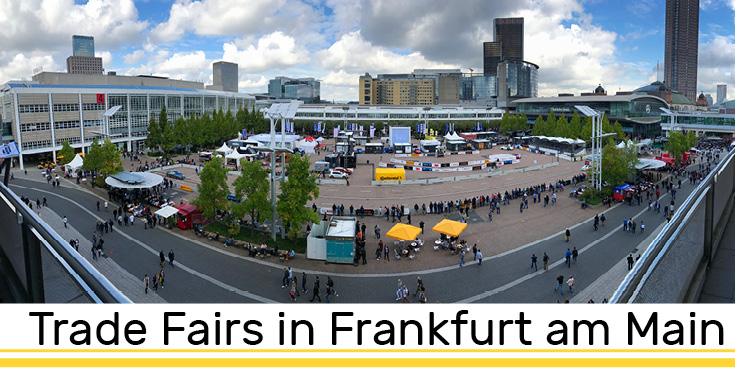
History of Trade Fairs in Frankfurt am Main
The first mention of the Frankfurt Trade Fair is in 1150, when the fairs took place in and around the Roemer marketplace in Frankfurt. During trade fairs in the middle ages, all the guesthouses in Frankfurt were booked, many trade fair guests were accommodated in private houses. While most stands were erected outside the Roemer building, goldsmiths and silversmiths as well as jewelers were given the most exclusive location: they were allowed to build their stands inside the Roemer for better protection of their precious goods. To read more about the Roemer, read our earlier article Deciphering the Roemer in Frankfurt am Main.
Thanks to Frankfurt's geographical location at the crossroads of important long-distance trade routes from and to Lyon, Venice, Antwerp, and Lübeck, the city was the hub of the flow of goods and meeting place for people from all over the world, together with the river Main as a favorable transport route. Everything was traded; from cloths and ceramics to books, cattle and more.
A special status was achieved by the privilege of Emperor Frederick II, who gave the fair visitors the full range of escorts during their return trip starting in the year 1240. Even during their stay in the city their security was ensured. The sequence during the fair weeks was roughly divided into four parts: the escorted arrival week, the actual business week, the week of payments and final dealmaking, and finally the departure week. In 1337, Emperor Ludwig granted the city of Frankfurt the privilege that no other fair could be erected throughout the Lands that could harm the Frankfurt fair in any way.
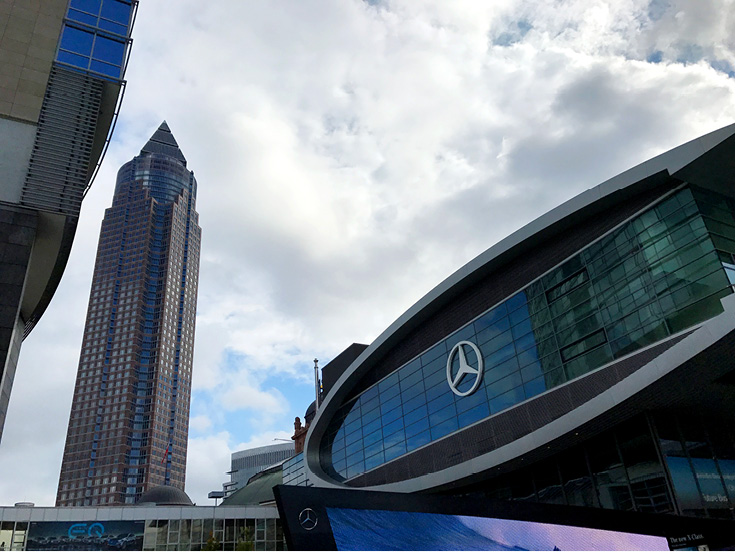
Frankfurt Trade Fair Landmarks
The most prominent building and also one of the highest skyscrapers in Frankfurt is the Messeturm - trade fair tower - with an altitude of 256.5 meters (841.5 feet) and a total of 54 floors. The Messeturm is, however, outside the trade fair grounds and is usually not used for trade fair events. Architecturally, its form stands out, which is why he is also called "pencil" by the people of Frankfurt.
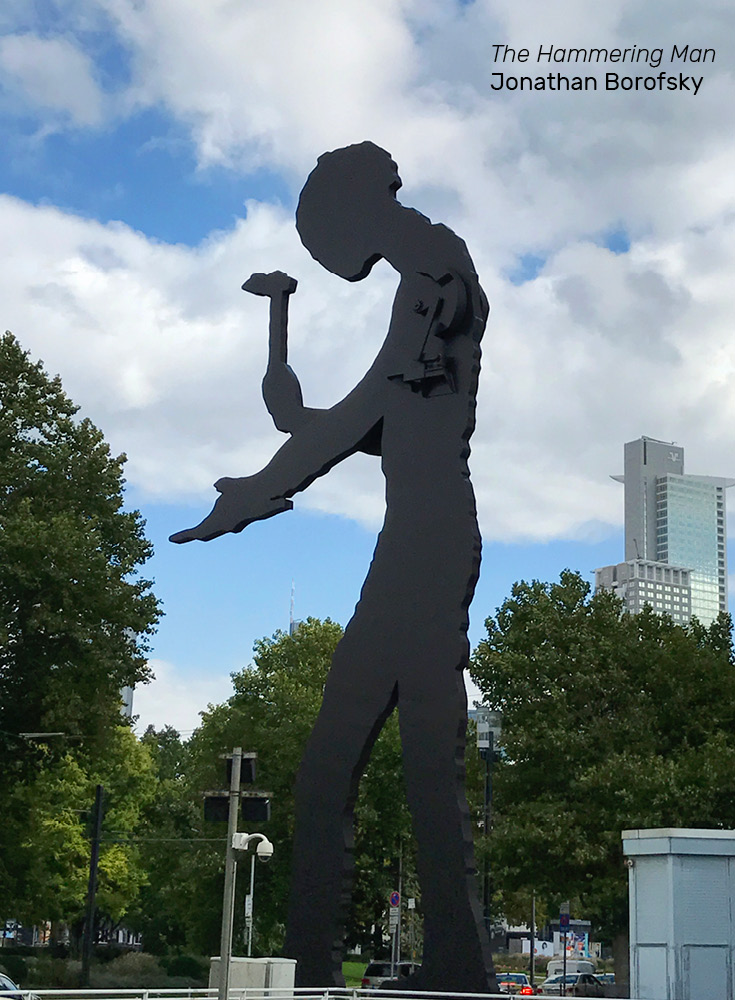
In front of the Messeturm you will find a large, black sculpture by the American artist Jonathan Borofsky called The Hammering Man. The black silhouette shows a worker who moves a hammer against a symbolic workpiece. This sculpture is meant to be a symbol of solidarity for all working people and can be found in various versions all around the world. The statue in Frankfurt am Main weighs 32 tons and was installed in 1991 for the “Art Frankfurt” trade show. This fair for modern art started in 1989 and was canceled due to lack of demand in 2007. The Hammering Man remained.
Today, the fairs in Frankfurt attract more than 1.5 million visitors every year. Every year, the world's largest book fair, Buchmesse takes place here, and the International Automobile Exhibition (IAA) is held every two years in Frankfurt. Most major car brands show all their models in various halls and my dad and I visit every time. This is what the halls look like inside during the International Automobile Exhibition (IAA).
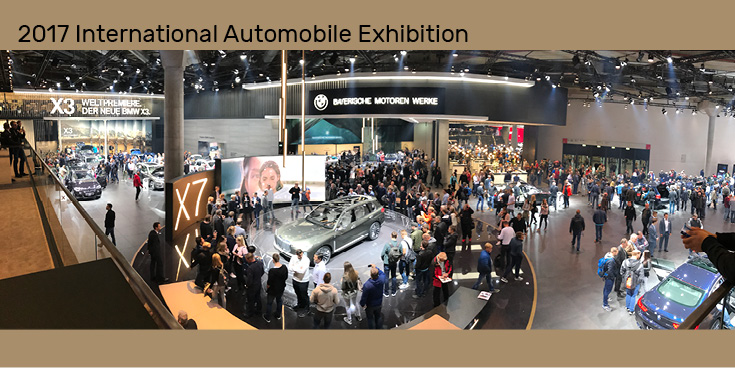
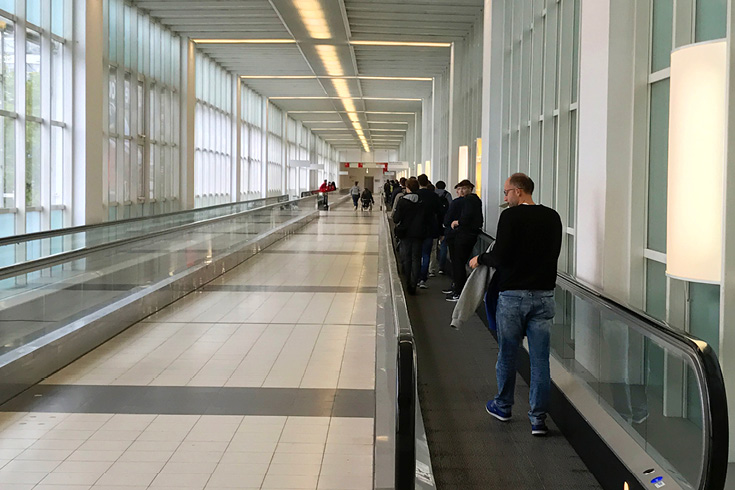
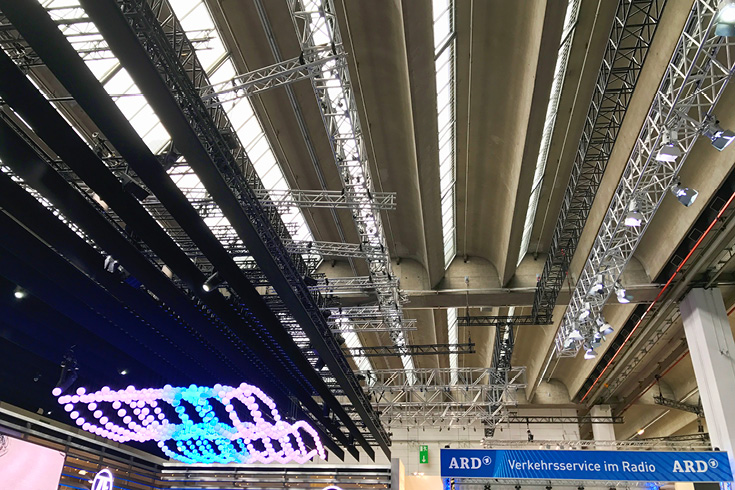
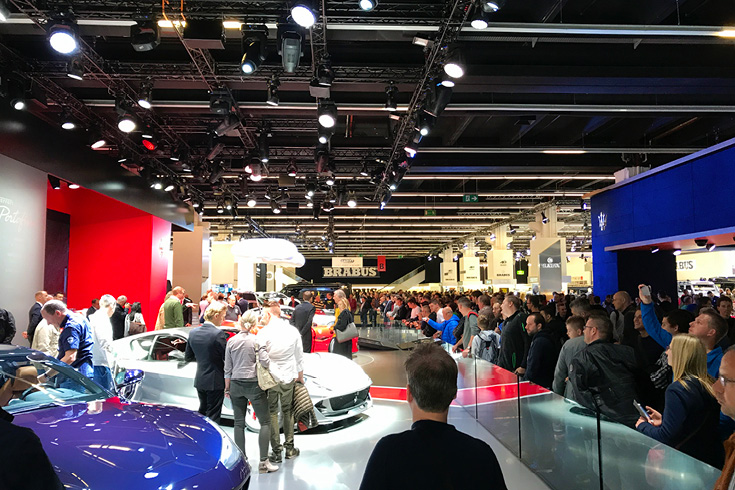
Festhalle in Frankfurt am Main
My favorite hall is the Festhalle, Festival Hall, built in 1907, and also the historic center of the trade fair grounds. It can hold up to 13,500 visitors unseated and is home to concerts, sporting events and Mercedes-Benz during the International Motor Show (IAA) every other year in September. The mixture of tradition and modernity is particularly evident during that time. You see old window panes and historic architecture meet the modern interpretation of beautiful cars by Mercedes-Benz. They also add a lot of light effects, that change every couple of minutes.
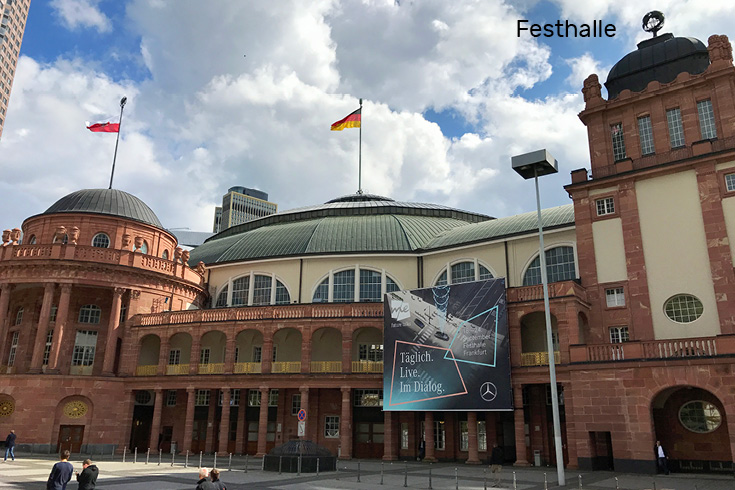
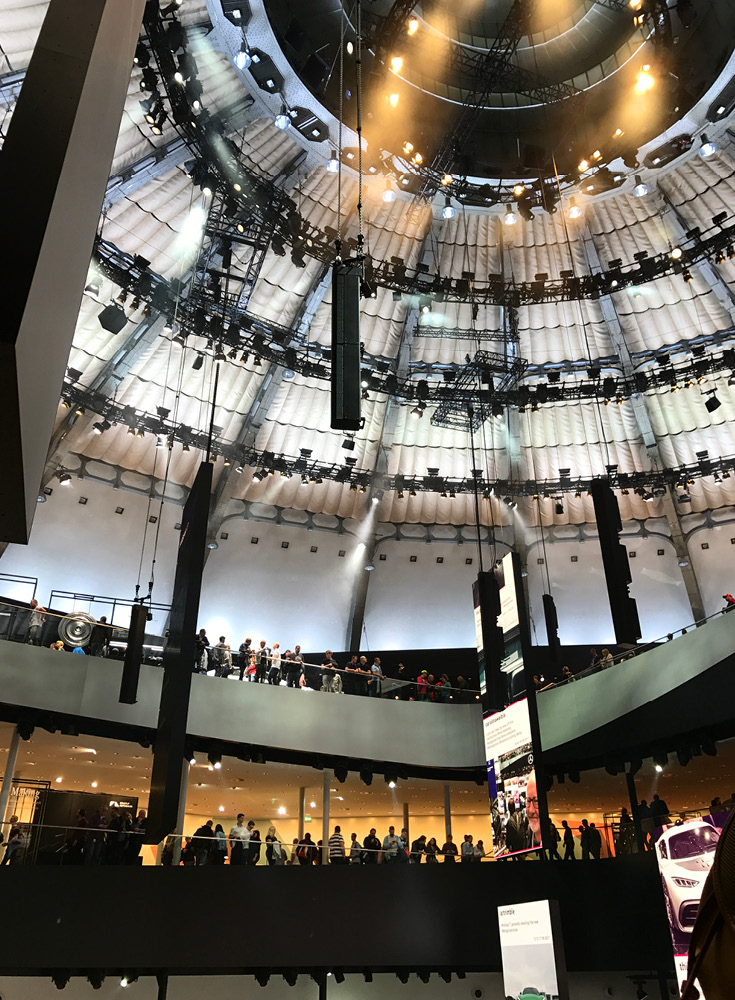
With a total of 11 exhibition halls, the exhibition grounds in Frankfurt offer space for all conceivable topics. Check out this video from Messe Frankfurt to see the whole trade fair grounds. Currently they are working on hall #12 which will be finished in the fall of 2018.
Follow Along
If you enjoyed this article, or these topics sound interesting to you, you'll love our weekly newsletter. You'll receive the newest posts each week and exclusive access to free planning resources like ‘Packing List & Tips for 2 Weeks in Germany’ and ‘Everything You Need to Rent a Car in Germany.
Thank you for reading!

